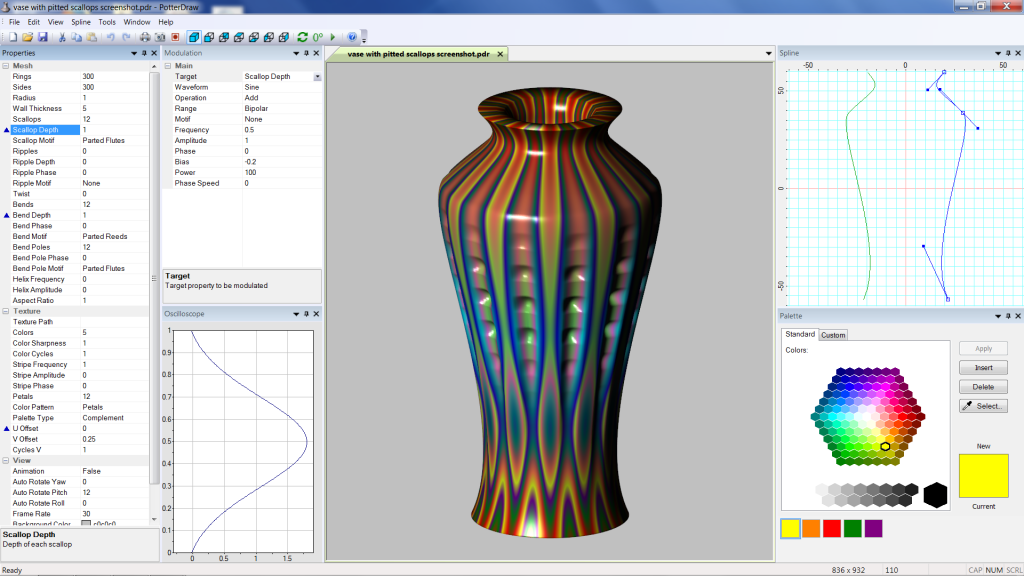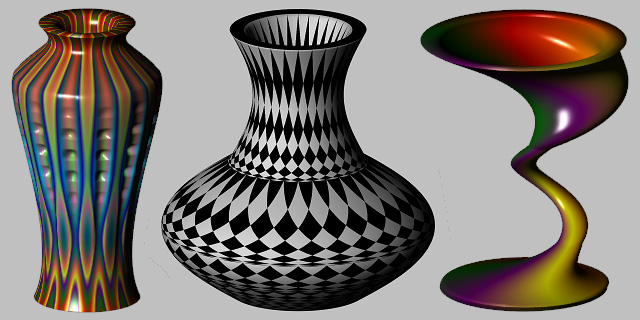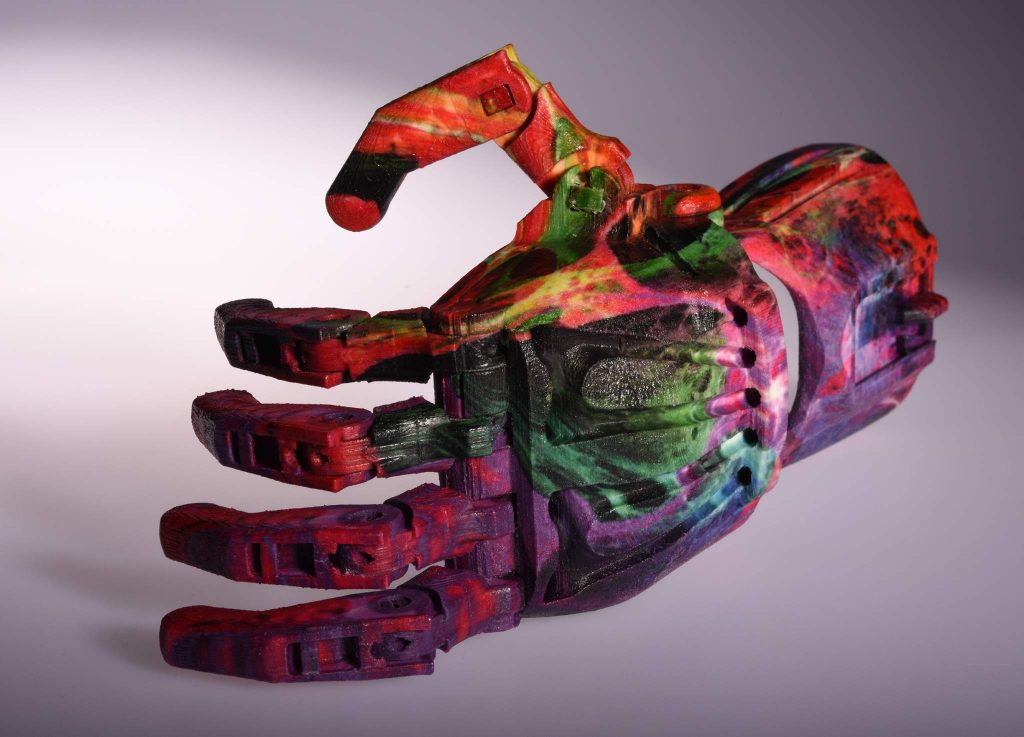Chris Korda is an activist, techno musician and software developer. She is credited with developing programs for the world’s first color 3D printer in 2004 during her term at Z Corporation, which was bought by 3D Systems in January 2012.
In her latest project, PotterDraw, Korda has released a program for designing complex and colorful vases.
Created to encourage creativity and collaboration, Korda discusses the importance of keeping things open-source, and give a view of the future through a gulping Martini glass.
When will 3D printed gulping Martini glasses become a reality? Swallowing Martini glass made in PatterDraw, from Chris Korda on Vimeo.
Keep it open-source
3D Printing Industry asked Korda a few questions about the PotterDraw project and the reasons for making the software open-source.
“I’m a strong supporter of the open-source movement, and have consistently released all of my many software projects under the GPL [General Public License],” says Korda.
“…open architectures provide the best ecosystem for robust development.”
Taking a look at her back-catalog of programs, the projects typically make it easier for people to digitally make either visual art or music. One program, titled ChordEase, integrates compatibility with all MIDI instruments, making electronic notes easier to play. Another, VJ software Whorld, makes psychedelic artworks using math.
Korda continues, “…open architectures provide the best ecosystem for robust development. As in the scientific process, inventions should stand or fall on their merits and be available to all for review and enhancement.”
Making impossible vases
In PotterDraw, users create pots using lines or curves drawn with a cursor.

Typically, would-be-designers would have to digitally sculpt such designs or build them from the ground-up using polygons/stock shapes. By comparison, Korda’s software automatically generates vessel interiors.
The simple interface means that users can create imaginative and impossible designs. However, when the vases are aren’t impossible, they can easily be exported as an .stl file for 3D printing.

A question of color
The only thing that has stopped Korda from 3D printing any PotterDraw designs is that she would like to make them in full color. She also believes that corporations are making little effort to release the technology, saying, “One of the reasons I left Z is because after 3DS took them over it was clear that color wasn’t going to be pushed as hard.”
“In my view, they’re sitting on the technology and this is part of why color hasn’t taken off as quickly as it could have.”
Irish 3D printer manufacturer Mcor, who hired Z Corp former CEO Tom Clay and sales directors Gary Fudge and Bryan Ferran, is the only other firm Korda considers innovative in its use of color.

Still she maintains, “All that notwithstanding, certainly it would be interesting to design and print some nice pots, in color or not. I hope others are sufficiently inspired by the software to do exactly that.”
Gulping martini glasses?
In addition to her attributes in music and software development, Korda is also founder of the Church of Euthanasia, an organization that advocates antihumanism and environmental preservation.
“The holy grail of 3D printing is to print a mobile phone all once, microchips and moving parts and all”
Within this social conscience, Korda further speculates on the future of 3D printing. When asked about the probability of a gulping Martini glass she says,
“I have no idea. The holy grail of 3D printing is to print a mobile phone all once, microchips and moving parts and all, so that no assembly is required. If that happens before the waves wash over southern Florida, look out for gulping martini glasses.”
To learn more about the people behind 3D printing, sign up to our free newsletter, and watch our stories on Facebook and Twitter.
If you’re looking for new creative opportunities in the industry, register on our 3D printing jobs site now.
Featured image: Chris Korda, activist, techno musician and software developer. Photo via Chris Korda on Last.FM.



